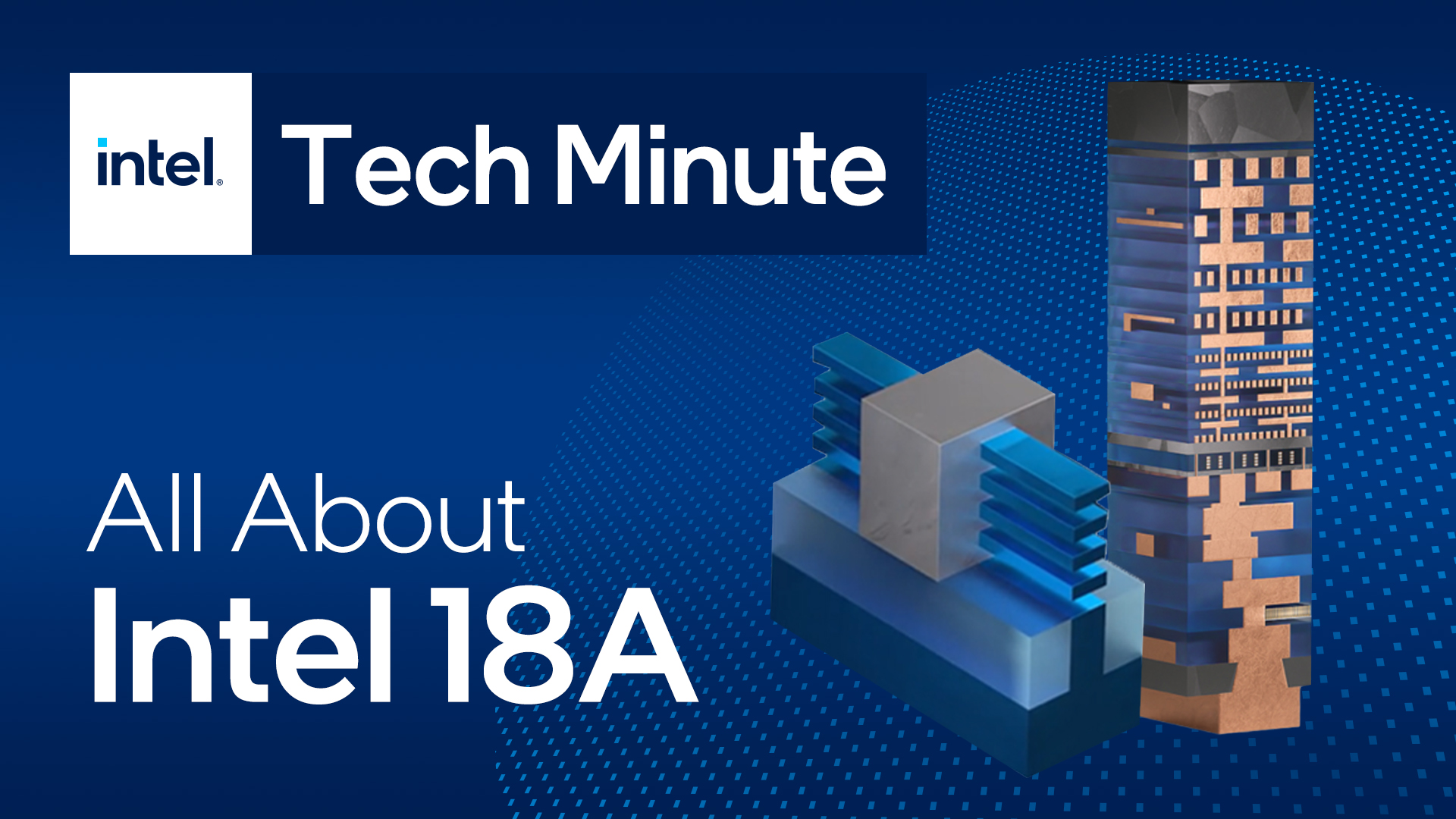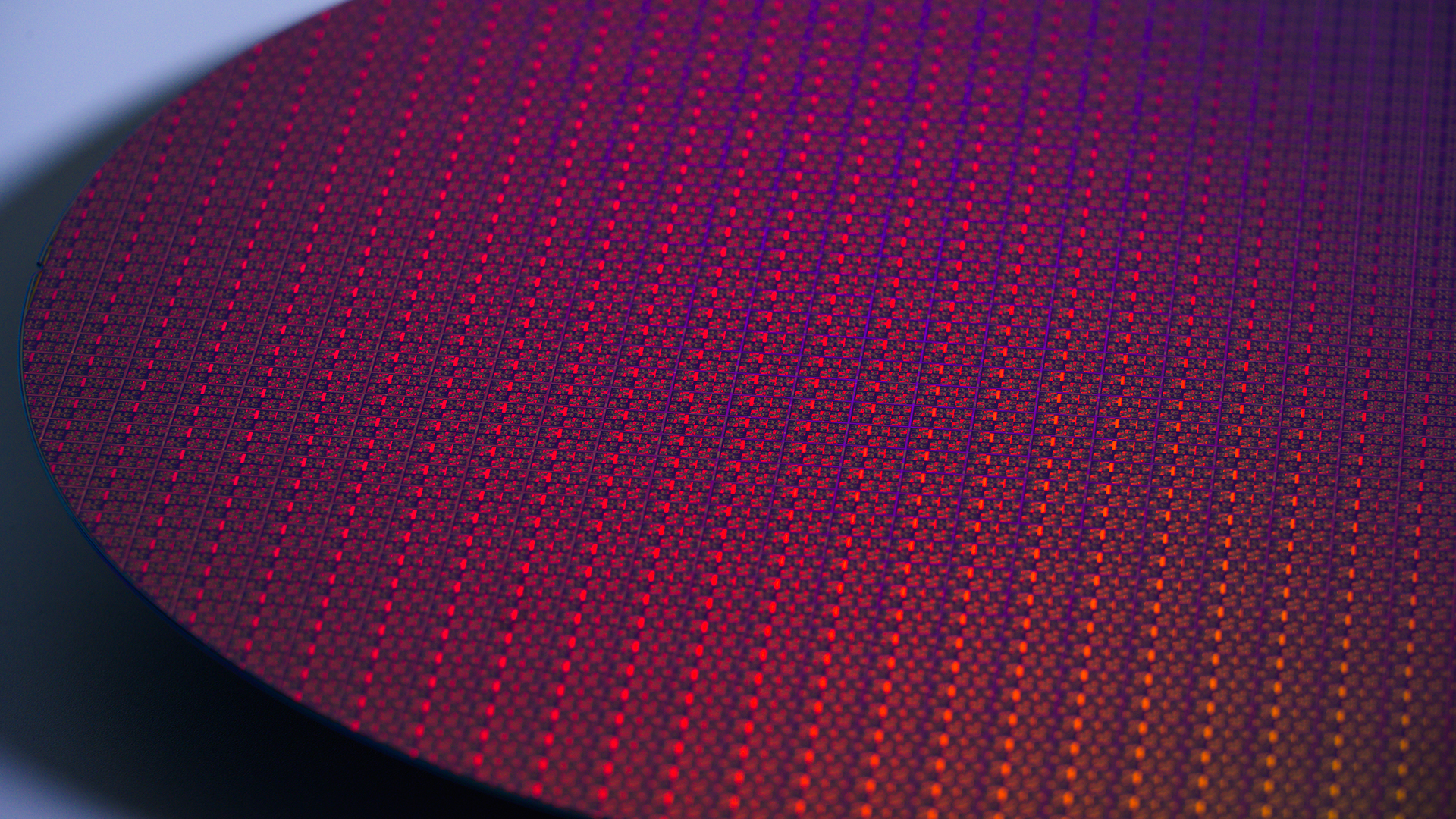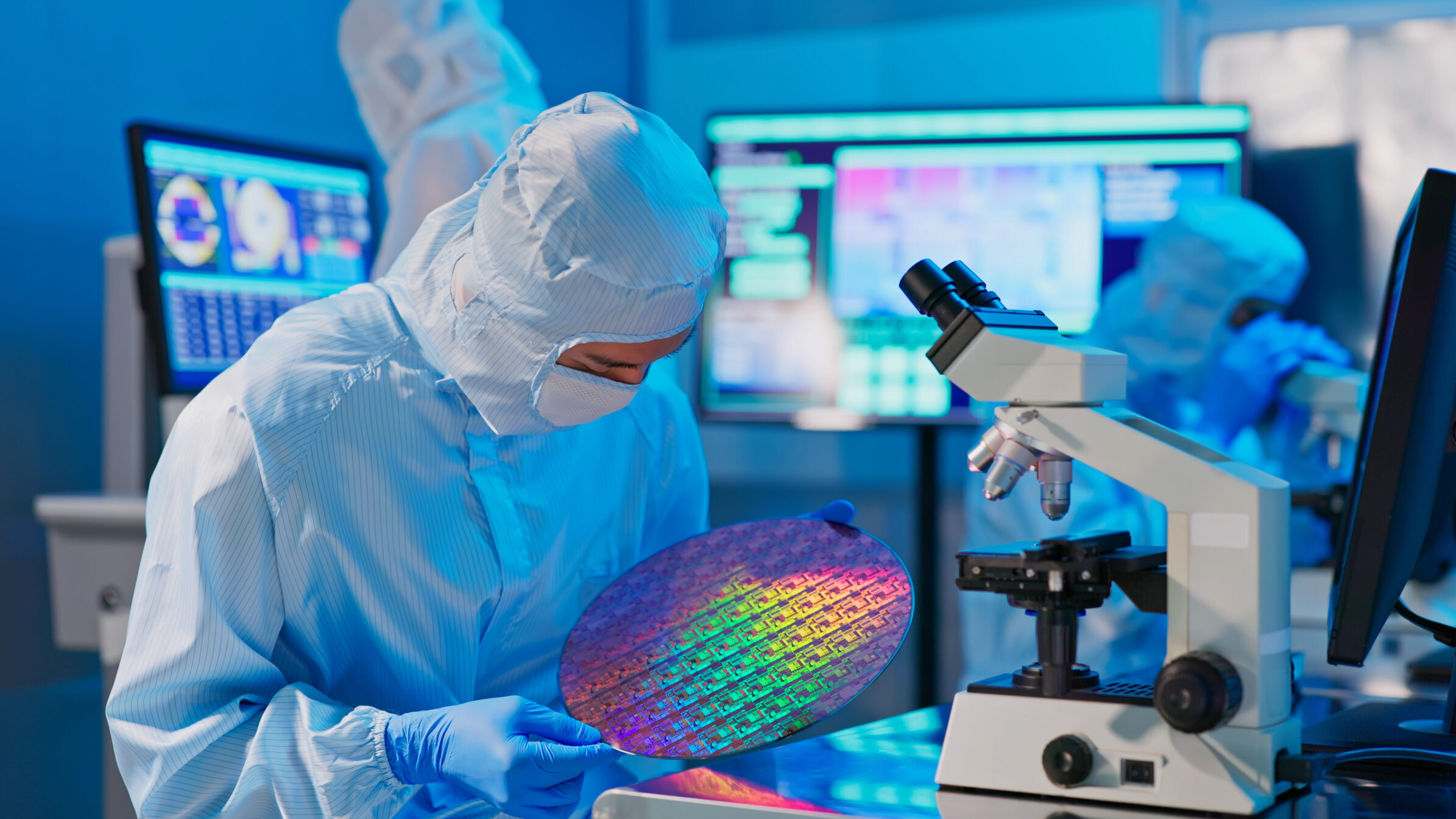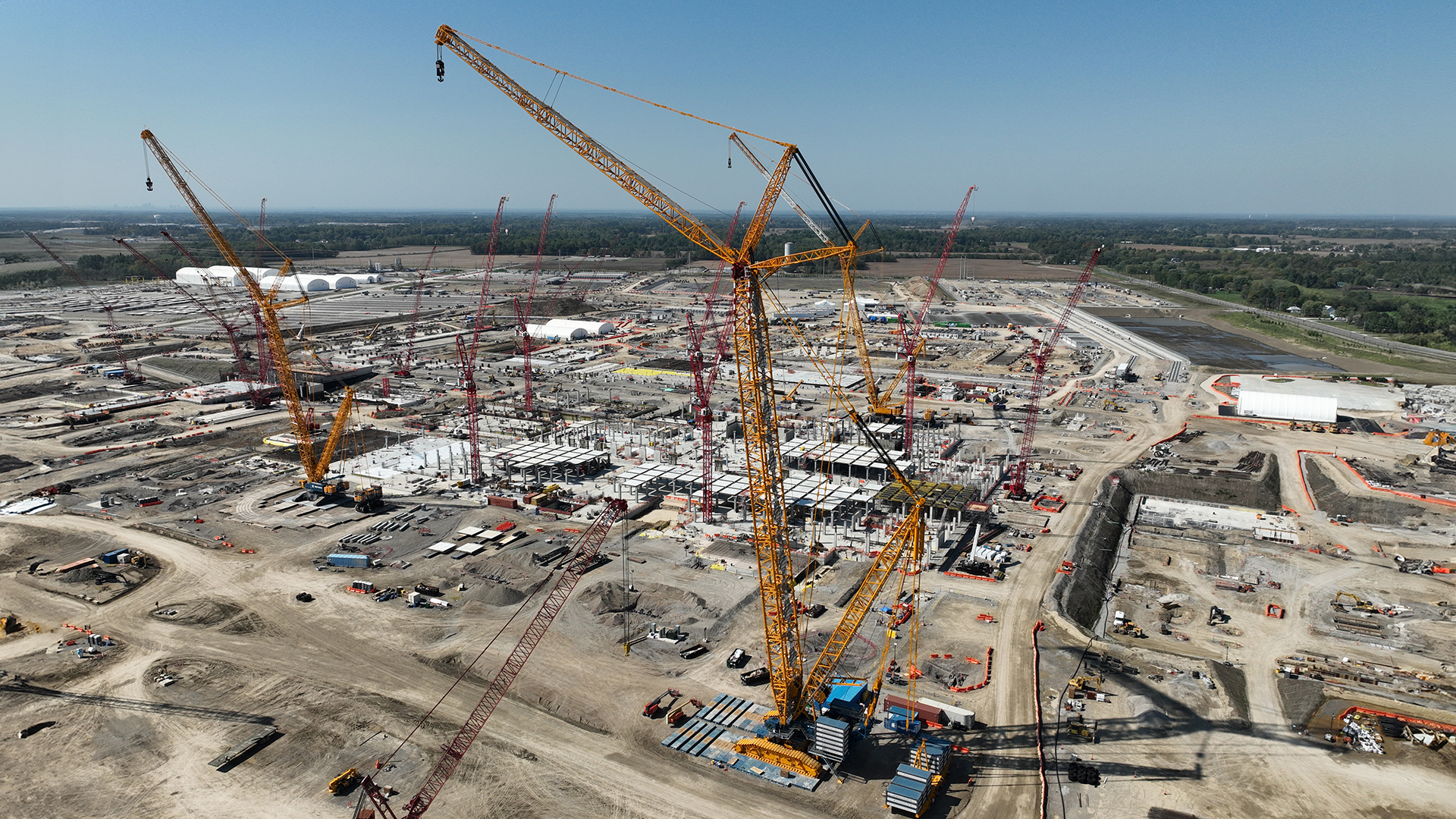Kevin O’Buckley Talks Progress on Intel 18A

Kevin O'Buckley
New Foundry Services leader reveals why he came to Intel, excitement for the foundry business and why Intel 18A matters to the future of computing.
Back in May, Intel welcomed Kevin O’Buckley as its new head of Foundry Services, leading growth of Intel’s foundry business and continuing to build out its ecosystem of intellectual property (IP) and electronic design automation (EDA) partners. Since then, O’Buckley has been busy speaking with customers, getting to know Intel and his team, and working closely with Intel Foundry’s other senior leaders to bring to life the first systems foundry built for the AI era. O’Buckley brings decades of experience at foundry and fabless companies, including IBM Microelectronics, Global Foundries and, most recently, Marvell Technology, where he was senior vice president of the Compute and Custom Solutions Engineering teams.
O’Buckley joined as Intel approaches the finish line of its ambitious strategy to deliver five process nodes in four years (5N4Y), culminating next year with high-volume manufacturing of the Intel 18A process technology – the industry’s first foundry node to successfully incorporate both RibbonFET gate-all-around transistors and PowerVia backside power technology. The first two Intel products using Intel 18A have successfully booted operating systems, are being used inside the company, and are yielding and performing well. Intel 18A is the core process fueling the company’s IDM 2.0 strategy and systems foundry approach, and it will represent a significant step in bringing Intel back to process leadership and industry-leading innovation.
More: Intel Foundry Achieves Major Milestones
Here, O’Buckley discusses his experience and leadership, why he’s a big believer in a systems foundry approach, what’s new with Intel 18A, and why he’s excited (and a little sad) to be moving from the land of Ben & Jerry’s to the land of Gordon Moore, Robert Noyce & Andy Grove.
Why Intel Foundry? Why now?
I spent the past few years at a great fabless company developing leading-edge data center products, but I spent a shocking amount of my time begging for supply from foundries and OSATs (outsourced semiconductor assembly and test vendors). Developing great products and then struggling to deliver them at the needed scale for your customers just plain stinks. This problem gets only more acute as the incredible demands of the AI era continue. It was a real lesson for me on the importance of a diverse and robust supply chain in our industry – something, frankly, that still isn’t in place at the scale needed. Intel is the only company in our industry positioned to do this, and I jumped at the opportunity to play a part in making it happen.
Intel Foundry promises to deliver a systems foundry for the AI era. Can you talk about what that means and why it’s important to foundry customers?
The AI era is a lot more than ChatGPT and Siri. Machine learning compute is expected to grow more than 3x per year over the next 10 years. Already, AI and high-performance computing (HPC) have for the first time surpassed mobile revenue in the chip industry. And by 2028, chiplets – and systems of chips – will surpass monolithic die. These are structural shifts that are pushing the boundaries of transistor innovation, device interconnect and advanced packaging. Intel Foundry is driving the full stack of system innovation to enable this transformation. If you also add in the incredible systems expertise we have developed over generations of scalable servers and even internal data centers, we have a complete set of offerings capable of enabling foundry customers to significantly improve scale and power efficiency, which is required for AI solutions.
A key element of Foundry Services is the world-class technologies being offered to external foundry customers for the first time. The first of these is the Intel 18A process technology. What makes Intel 18A so important, and what’s the latest on its progress?
This is such an incredible moment for Intel and for our industry. In Intel 18A, we are pioneering multiple technologies that are essential to our customers and that will be a significant step toward bringing us back to process leadership: RibbonFET gate-all-around transistors for device performance and PowerVia backside power technology to enable new device interconnect methods. We also have next-gen EMIB (embedded multi-die interconnect bridge) and Foveros Direct 3D advanced packaging technologies for higher density and power handling. These are the innovations our customers need to keep the economics of Moore’s Law alive – and we are leading the way. Make sure that sinks in – Intel is out ahead of everyone else in the industry with these innovations – that feels great!
Can you tell us about some implementations of Intel 18A and the systems foundry approach that have led to positive customer outcomes?
Intel 18A is driving next-gen AI innovation across Intel products—and the early results are very encouraging. The Panther Lake client processor is powered on and booting Windows, yielding well, in use inside Intel and ahead of schedule on product qualification milestones. Clearwater Forest for data center is powered on, booting operating systems, in use inside Intel and performing well. What an incredible accomplishment for our customer design teams and what an incredible testament to these technology innovations being delivered first time, right. This is Intel at its best—from design enablement and IP to technology development and manufacturing to SoC (system-on-chip) architecture and development.
Ecosystem partners are updating EDA and IP process flows and tools to the Process Design Kit (PDK) 1.0, which will enable customers to begin their final production designs. And we’re seeing continued interest from external foundry customers who are actively designing on Intel 18A. These positive outcomes are a signal for fabless customers and the industry at large that IDM 2.0 and our systems foundry strategy is working.
We announced in February that Intel had “taped-out” Clearwater Forest. It will be the first high-volume, high-performance implementation of RibbonFET and PowerVia on the server—and will be packaged with Foveros Direct 3D technology. What can this combination mean for foundry customers?
In Intel 18A, we are delivering quite a list of industry firsts for foundry customers. Why? It’s because our work continuing Moore’s Law is increasingly a multifront battle. Transistor scaling now requires a totally different device architecture that we enable with RibbonFET. Incredible demands for power at ever lower, tightly controlled voltages required innovation in power delivery and signal routing that we deliver with PowerVia. Clearwater Forest also introduces the Intel 3-T process technology for the first time as the base die, while Foveros Direct 3D and EMIB technologies enable this at scale on a package that previous monolithic single-chip designs simply couldn’t deliver. It’s awesome!
Circling back to AI: We’ve said before that the promise of AI depends on semiconductor companies achieving big leaps in scale and efficiency. Why is this and how do they get there?
At a high level, in recent decades, the growth of global compute has been dictated by Moore’s Law. Transistor density would scale, we would push core counts and frequency to take advantage of it, and the industry would scale consistently. Today, demand for capability in AI far exceeds what even Moore’s Law can deliver – just this year, a 2x increase in training FLOPS on top of almost doubling the number of chips being delivered. This means we need more of everything: silicon, density, power and power management, packaging, and substrates. This growth in demand is projected to be the norm for the foreseeable future.
The global supply chain remains under elevated scrutiny. What are customers telling you about how balanced capacity factors into their future plans?
Our customers are smart. They see the same demand signals that we do in the AI era, and they also see sustained geopolitical tensions as threats to their business that require risk management. That means more suppliers across a more geographically diverse footprint. That’s us! We’re investing in facilities all around the world and doing so with improved sustainability being one of our top priorities.
You are making the big move from Burlington, Vermont, to Santa Clara, California. What excites you about living in Silicon Valley and what will you miss about Vermont?
It’s Silicon Valley! This is where our customers are. And as we work together to continue to transform Intel Foundry into a business that will serve our entire industry, this is the place for me to be.
On a personal note, as our youngest son is just finishing college, my wife and I made the decision together to make the jump (along with our dogs) now that the nest is empty. I’d be lying if I said we were entirely abandoning the East Coast though – our sons live in Boston, and we’re working to make sure we have a place to go when we want to visit them. And, it turns out you can get good ice cream and skiing in California, too.
Forward-Looking Statements
This question-and-answer news story (Q&A) contains forward-looking statements that involve a number of risks and uncertainties. Words such as "accelerate", "achieve", "aim", "ambitions", "anticipate", "believe", "committed", "continue", "could", "designed", "estimate", "expect", "forecast", "future", "goals", "grow", "guidance", "intend", "likely", "may", "might", "milestones", "next generation", "objective", "on track", "opportunity", "outlook", "pending", "plan", "position", "possible", "potential", "predict", "progress", "ramp", "roadmap", "seek", "should", "strive", "targets", "to be", "upcoming", "will", "would", and variations of such words and similar expressions are intended to identify such forward-looking statements, which may include statements regarding:
- our business plans and strategy and anticipated benefits therefrom, including with respect to our IDM 2.0 strategy, Smart Capital strategy, partnerships with Apollo and Brookfield, internal foundry model, updated reporting structure, and AI strategy;
- projections of our future financial performance, including future revenue, gross margins, capital expenditures, and cash flows;
- projected costs and yield trends;
- future cash requirements, the availability, uses, sufficiency, and cost of capital resources, and sources of funding, including for future capital and R&D investments and for returns to stockholders, such as stock repurchases and dividends, and credit ratings expectations;
- future products, services, and technologies, and the expected goals, timeline, ramps, progress, availability, production, regulation, and benefits of such products, services, and technologies, including future process nodes and packaging technology, product roadmaps, schedules, future product architectures, expectations regarding process performance, per-watt parity, and metrics, and expectations regarding product and process leadership;
- investment plans and impacts of investment plans, including in the US and abroad;
- internal and external manufacturing plans, including future internal manufacturing volumes, manufacturing expansion plans and the financing therefor, and external foundry usage;
- future production capacity and product supply;
- supply expectations, including regarding constraints, limitations, pricing, and industry shortages;
- plans and goals related to Intel's foundry business, including with respect to anticipated customers, future manufacturing capacity and service, technology, and IP offerings;
- expected timing and impact of acquisitions, divestitures, and other significant transactions, including the sale of our NAND memory business;
- expected completion and impacts of restructuring activities and cost-saving or efficiency initiatives;
- future social and environmental performance goals, measures, strategies, and results;
- our anticipated growth, future market share, and trends in our businesses and operations;
- projected growth and trends in markets relevant to our businesses;
- anticipated trends and impacts related to industry component, substrate, and foundry capacity utilization, shortages, and constraints;
- expectations regarding government incentives;
- future technology trends and developments, such as AI;
- future macro environmental and economic conditions;
- geopolitical tensions and conflicts and their potential impact on our business;
- tax- and accounting-related expectations;
- expectations regarding our relationships with certain sanctioned parties; and
- other characterizations of future events or circumstances.
Such statements involve many risks and uncertainties that could cause our actual results to differ materially from those expressed or implied, including those associated with:
- the high level of competition and rapid technological change in our industry;
- the significant long-term and inherently risky investments we are making in R&D and manufacturing facilities that may not realize a favorable return;
- the complexities and uncertainties in developing and implementing new semiconductor products and manufacturing process technologies;
- our ability to time and scale our capital investments appropriately and successfully secure favorable alternative financing arrangements and government grants;
- implementing new business strategies and investing in new businesses and technologies;
- changes in demand for our products;
- macroeconomic conditions and geopolitical tensions and conflicts, including geopolitical and trade tensions between the US and China, the impacts of Russia's war on Ukraine, tensions and conflict affecting Israel and the Middle East, and rising tensions between mainland China and Taiwan;
- the evolving market for products with AI capabilities;
- our complex global supply chain, including from disruptions, delays, trade tensions and conflicts, or shortages;
- product defects, errata and other product issues, particularly as we develop next-generation products and implement next-generation manufacturing process technologies;
- potential security vulnerabilities in our products;
- increasing and evolving cybersecurity threats and privacy risks;
- IP risks including related litigation and regulatory proceedings;
- the need to attract, retain, and motivate key talent;
- strategic transactions and investments;
- sales-related risks, including customer concentration and the use of distributors and other third parties;
- our significantly reduced return of capital in recent years;
- our debt obligations and our ability to access sources of capital;
- complex and evolving laws and regulations across many jurisdictions;
- fluctuations in currency exchange rates;
- changes in our effective tax rate;
- catastrophic events;
- environmental, health, safety, and product regulations;
- our initiatives and new legal requirements with respect to corporate responsibility matters; and
- other risks and uncertainties described in this Q&A, our 2023 Form 10-K, and our other filings with the SEC.
Given these risks and uncertainties, readers are cautioned not to place undue reliance on such forward-looking statements. Readers are urged to carefully review and consider the various disclosures made in this Q&A and in other documents we file from time to time with the SEC that disclose risks and uncertainties that may affect our business.
Unless specifically indicated otherwise, the forward-looking statements in this Q&A do not reflect the potential impact of any divestitures, mergers, acquisitions, or other business combinations that have not been completed as of the date of this filing. In addition, the forward-looking statements in this Q&A are based on management's expectations as of the date of this Q&A, unless an earlier date is specified, including expectations based on third-party information and projections that management believes to be reputable. We do not undertake, and expressly disclaim any duty, to update such statements, whether as a result of new information, new developments, or otherwise, except to the extent that disclosure may be required by law.



